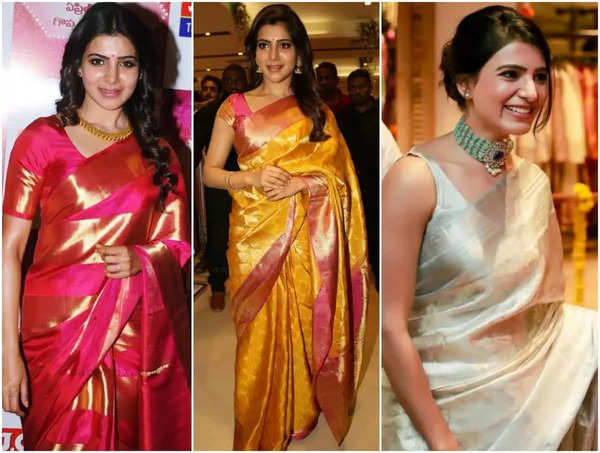Kanjeevaram saris, often hailed as the “Queen of Silks,” hold a prestigious place in Indian fashion. Originating from the town of Kanchipuram in Tamil Nadu, these saris are renowned for their exquisite craftsmanship, vibrant colors, and rich cultural heritage. Woven from pure mulberry silk and often adorned with real gold and silver threads, Kanjeevaram saris are a symbol of elegance and tradition, cherished by women across India and the world.
The history of Kanjeevaram saris dates back over 400 years, with the craft believed to have been introduced by the descendants of Sage Markanda, the master weaver of gods in Hindu mythology. Kanchipuram, also known as Silk City, became a thriving center for silk weaving due to its proximity to mulberry silk-producing regions and the patronage of South Indian royalty.
Kanjeevaram saris have played a significant role in Indian culture, especially in Tamil Nadu. They are considered auspicious and are an integral part of weddings, festivals, and special occasions. The intricate designs often feature motifs inspired by temple architecture, nature, and mythology, making each sari a work of art that tells a story.

Creating a Kanjeevaram sari is a labour-intensive process that can take anywhere from 10 days to several months, depending on the complexity of the design. The process begins with the selection of the finest quality mulberry silk, which is dyed in vibrant colours. The silk threads are then interlaced with zari (gold or silver threads) to create the saree’s distinctive patterns and borders.
The weaving process involves three shuttles: one for the body of the sari and two for the borders. The borders are often woven separately and later attached to the body with intricate precision. The pallav, or the decorative end piece of the saree, is typically embellished with elaborate designs and motifs. The hallmark of a Kanjeevaram sari is its contrasting border and pallav, which stand out against the main body of the sari, creating a striking visual effect.
Kanjeevaram saris are celebrated for their rich and diverse designs. Traditional motifs include peacocks, parrots, elephants, and flowers, as well as geometric patterns and checks. These motifs are often inspired by the carvings and sculptures found in South Indian temples, reflecting the region’s rich cultural heritage.
In recent years, Kanjeevaram weavers have embraced innovation, incorporating contemporary designs and color combinations to cater to modern tastes. Fusion designs, which blend traditional motifs with modern aesthetics, have become increasingly popular, attracting a younger generation of sari enthusiasts. Despite these innovations, the essence of the Kanjeevaram sari remains rooted in its traditional craftsmanship and timeless appeal.
Kanjeevaram saris have transcended their traditional roots to become a global fashion statement. Renowned designers and fashion houses have incorporated Kanjeevaram silk into their collections, showcasing its versatility and elegance. Celebrities and fashion icons, both in India and abroad, have been spotted wearing Kanjeevaram saris at various high-profile events, further cementing their status as a symbol of luxury and sophistication.
Bridal fashion, in particular, has embraced the grandeur of Kanjeevaram saris. Brides often choose Kanjeevaram saris for their wedding day, valuing their rich colors, intricate designs, and the sense of tradition they embody. The saris are often passed down through generations as heirlooms, cherished for their enduring beauty and cultural significance.
Kamala Harris ‘Gets Support Of 4.4 Million Indian-Americans’ | Big Cheer From ‘Samosa Caucus’
Despite the widespread popularity of Kanjeevaram saris, the traditional weaving industry faces several challenges. The labor-intensive nature of the craft, coupled with the rising cost of raw materials, has made it increasingly difficult for artisans to sustain their livelihoods. Additionally, competition from machine-made imitations and changing consumer preferences pose significant threats to the survival of traditional Kanjeevaram weaving.
Efforts are being made to preserve and promote this timeless art form. Government initiatives, non-profit organizations, and fashion designers are working together to support the weavers and ensure the continuation of their craft. Training programs and workshops aim to equip young weavers with the skills needed to carry forward the tradition, while also encouraging innovation and modern design sensibilities.










